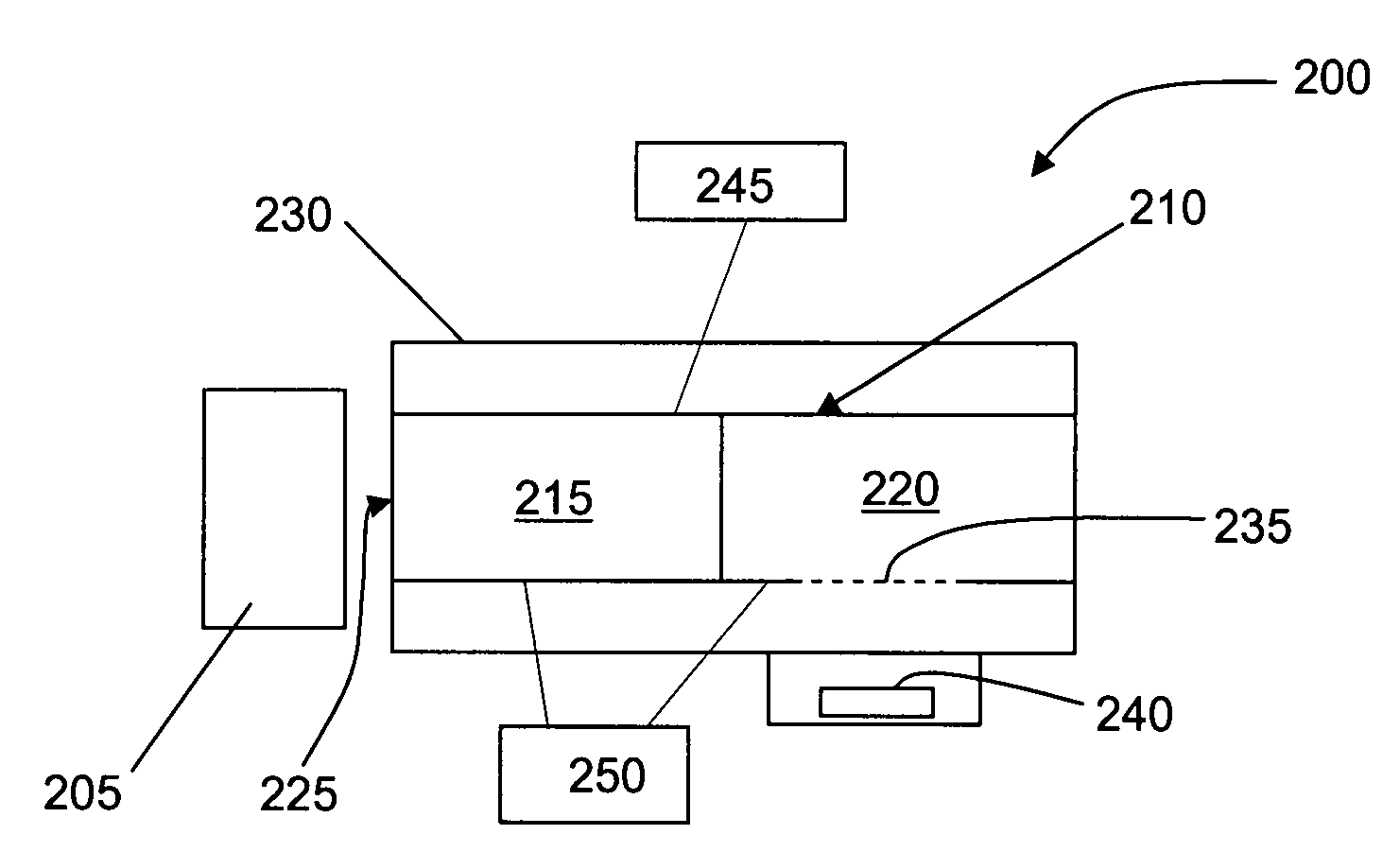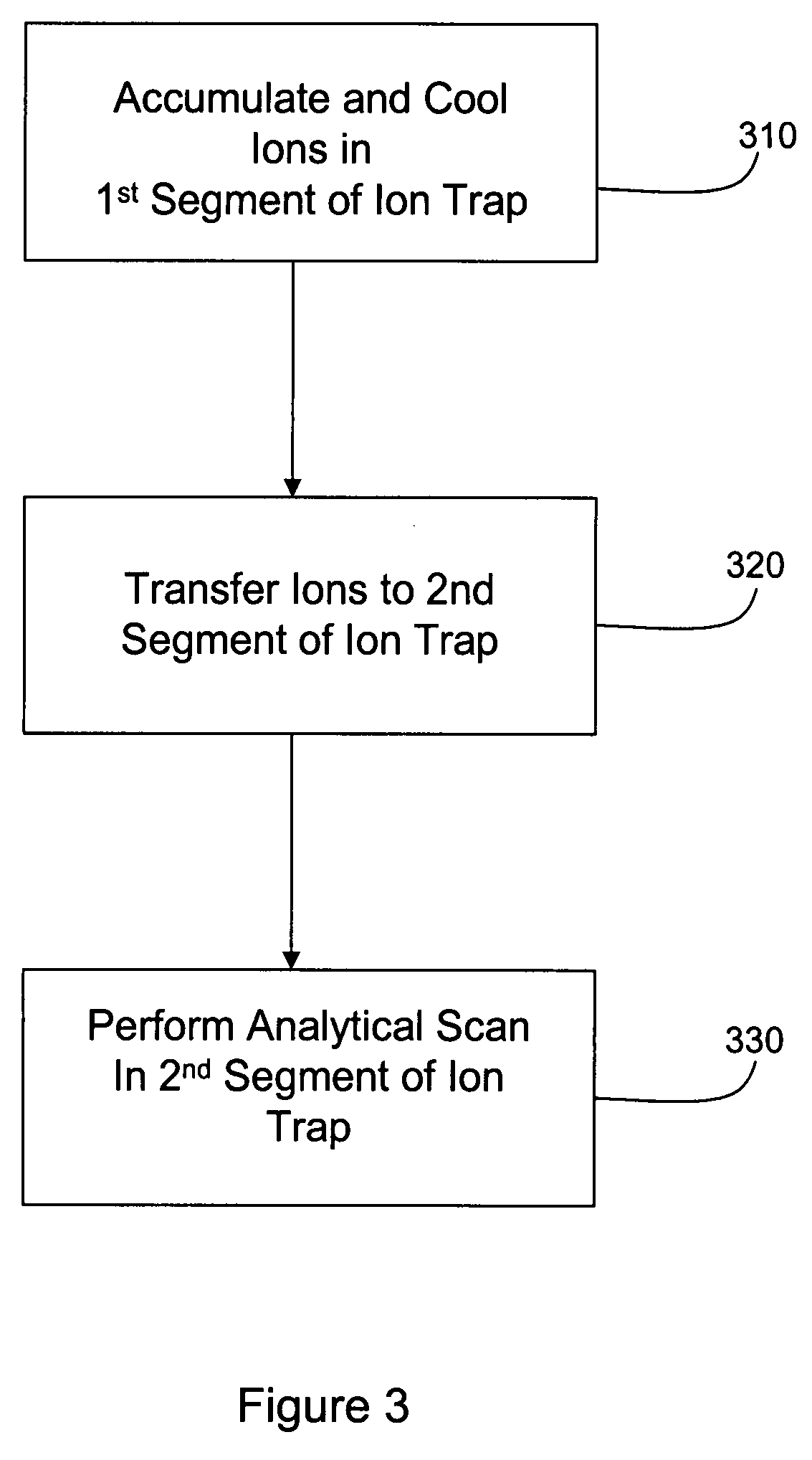Segmented ion trap mass spectrometry
a mass spectrometry and segmented ion technology, applied in the field of segmented ion trap mass spectrometry, can solve the problems of reducing the efficiency of ions entering and exiting the mass analyzer, the difficulty of trapping ions in the mass analyzer, and the reduction of sensitivity, so as to achieve good collisional energy removal and consequent capture efficiency without compromising analytical scan resolution or speed
- Summary
- Abstract
- Description
- Claims
- Application Information
AI Technical Summary
Benefits of technology
Problems solved by technology
Method used
Image
Examples
Embodiment Construction
[0025]FIG. 2 is a schematic depiction of the major components of a mass spectrometer system 200 comprising a laser-based ionization source 205 and an ion trap 210 in accordance with an embodiment of the present invention. The ion trap configuration 210 of the present invention is configurable to provide a plurality of (at least two) substantially discrete trapping volumes or segments 215, 220, each of these segments or combination of segments being electrically isolated from one another when an electrical and / or magnetic isolation mechanism is activated, and capable of acting in combination as a continuous device when the segments are “assembled” or the electrical / magnetic isolation means has been deactivated. The ion trap configuration must enable the interior volume of the ion trap 210 to be physically subdivided such that ions may be spatially trapped in one or more of the discrete trapping regions 215, 220 of the ion trap 210.
[0026]The multi-segment configuration of the ion trap...
PUM
 Login to View More
Login to View More Abstract
Description
Claims
Application Information
 Login to View More
Login to View More - R&D
- Intellectual Property
- Life Sciences
- Materials
- Tech Scout
- Unparalleled Data Quality
- Higher Quality Content
- 60% Fewer Hallucinations
Browse by: Latest US Patents, China's latest patents, Technical Efficacy Thesaurus, Application Domain, Technology Topic, Popular Technical Reports.
© 2025 PatSnap. All rights reserved.Legal|Privacy policy|Modern Slavery Act Transparency Statement|Sitemap|About US| Contact US: help@patsnap.com



